This comprehensive guide on AI dubbing applications will help you choose the best dubbing app to grow your business and reach the global market. You are strongly advised to go through every section of this piece before deciding upon the video dubbing app you wish to own and use for the next couple of years.
Part 1. What Is a Dubbing Application?
A dubbing application is a computer program (or a mobile app) that translates audio into several other languages for localization. An efficient dubbing app uses advanced AI algorithms to clone your voice, which further helps in retaining your pitch and tone in the video while translating. This allows the target audience to hear and experience the acoustics exactly the way you recorded them, but in their native language.
Another use case of a dubbing application is while online streaming. Because many AI dubbing apps can translate audio in real-time, such a program works as a boon for business owners, live streamers, and gamers.
An advanced AI dubbing application can even generate audio from text, eliminating the need for hiring a voiceover professional, which could be a costly approach.
Part 2. 7 Video Dubbing Apps You Can Try
After understanding the significance of dubbing applications, you can check the following 7 best video dubbing apps, try each of them, and then pick the one you find suitable:
1. BlipCut
BlipCut is an easy-to-use AI dubbing and video translation tool built for creators, educators, and agencies who want to boost global reach and save money. It supports 40+ languages, AI voice cloning, and lip-sync dubbing, so your videos sound natural and stay perfectly in sync. Ideal for YouTubers, online teachers, and training teams looking to repurpose content for worldwide audiences.
Pros
![]()
-
Simple workflow — no technical setup needed
-
Natural-sounding AI voices with tone control
-
One-stop translation, dubbing, and subtitles
-
Affordable compared to enterprise tools
Cons
![]()
-
Requires internet connection (no offline mode)
-
May need manual review for emotional or complex scenes
2. DeepDub
DeepDub, the first AI dubbing application on this list, is best for OTT dubs. While pitching the product, they proudly highlight one of the Hulu dramas, ‘Vanda’, being dubbed using DeepDub. This makes the tool more reliable among professional creators.
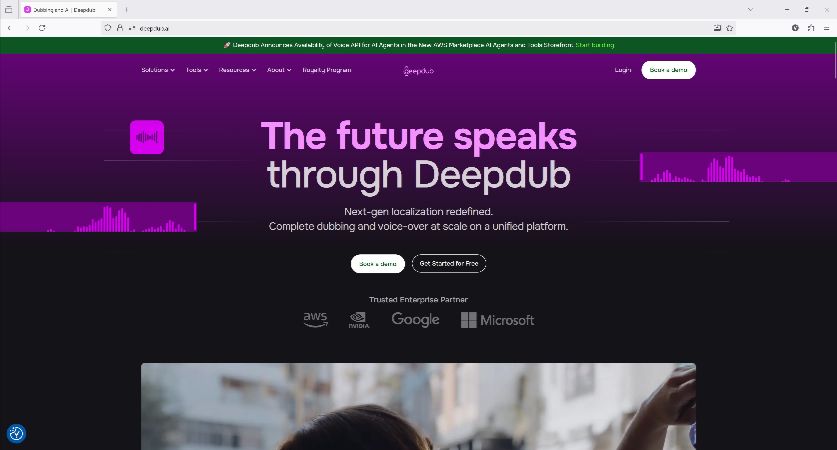
Pros
![]()
-
Supports lip sync
-
OTT portal integration
-
Industry-standard dubbing
Cons
![]()
-
Complex UI
-
Even paid plans offer limited AI credits
3. Maestra
Maestra is a versatile dubbing app that comprises an AI translator, transcriber, voice cloning, etc. The landing page offers the ‘Upload Your File’ button to reflect confidence in its product. Furthermore, you don’t need to sign up to try Maestra. However, the trial plan is capped at a 2GB file size.
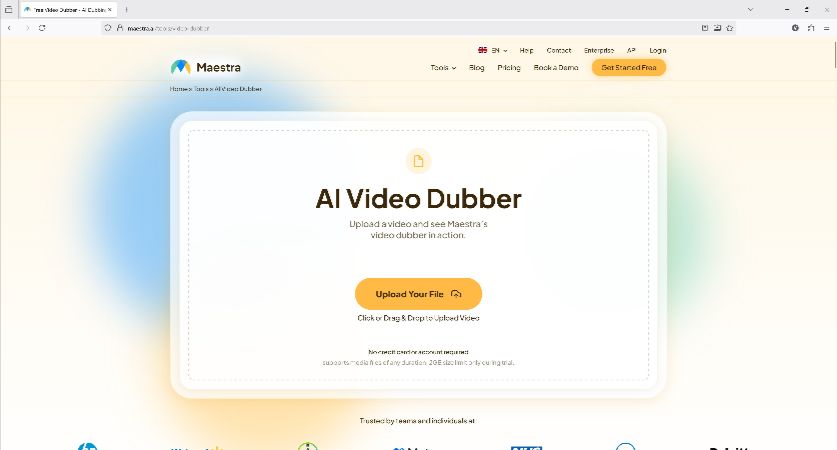
Pros
![]()
-
Real-time dubbing
-
Subtitle generator
-
Subtitle editor
Cons
![]()
-
No free plan
-
Each Maestra solution needs a separate paid subscription
4. Papercup
Papercut supports multilingual dubbing, producing broadcast-quality results using efficient AI algorithms. While the tool uses artificial intelligence for dubbing, the AI modules are trained and regularly updated by humans for realism when producing outputs.
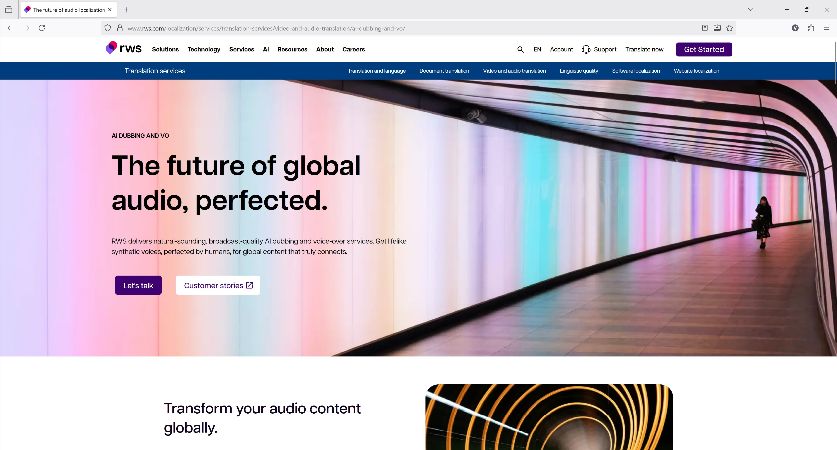
Pros
![]()
-
Comparatively faster
-
Consists of custom AI speakers
-
Papercup is best suited for media channels and news portals
Cons
![]()
-
Papercup requires a registered account to avail a trial
-
Locating pricing plans is quite challenging, at least without registering for a Papercup account
5. ElevenLabs
A dubbing app popular for producing the most accurate and natural-sounding outputs, ElevenLabs is worth trying. The web tool supports over 30 languages and several AI voices to choose from per your requirements. You can expect dialect accuracy when using ElevenLabs.
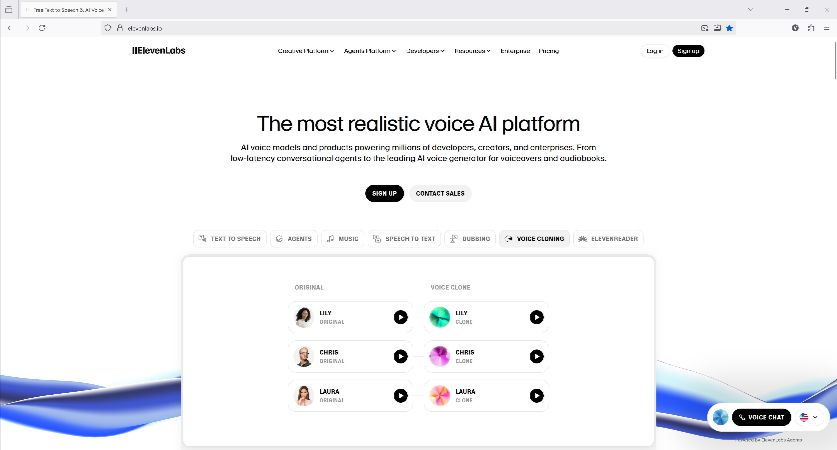
Pros
![]()
-
Supports over 29 languages
-
Voice cloning
-
Cheaper subscription plans
Cons
![]()
-
Limited free credits
-
Business plans are comparatively expensive
6. HeyGen
Another efficient AI dubbing application that gives tough competition to ElevenLabs, HeyGen comprises a range of video avatars. Although HeyGen mainly promotes itself as an AI video creator, the built-in translator does efficient translation when you upload a clip recorded in a foreign language.
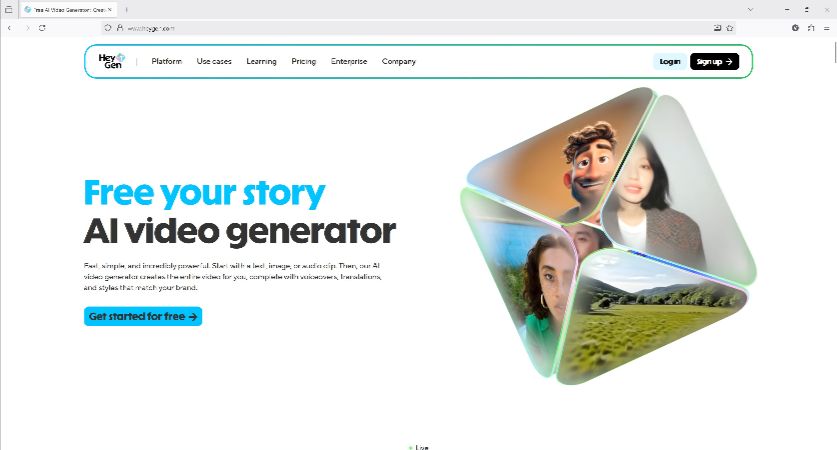
Pros
![]()
-
Exports 4K videos
-
Supports +175 languages
-
HeyGen’s Team plan allows a collaborative workspace
Cons
![]()
-
The free HeyGen plan allows only 3 videos a month
-
The free HeyGen plan exports only 720p videos
7. VerboLabs
VerboLabs is an efficient AI-powered dubbing application for video localization, especially when promoting services and/or products globally. VerboLabs, in addition to being an efficient AI dubbing tool, also has a built-in subtitle generator for professional and industry-standard outputs.
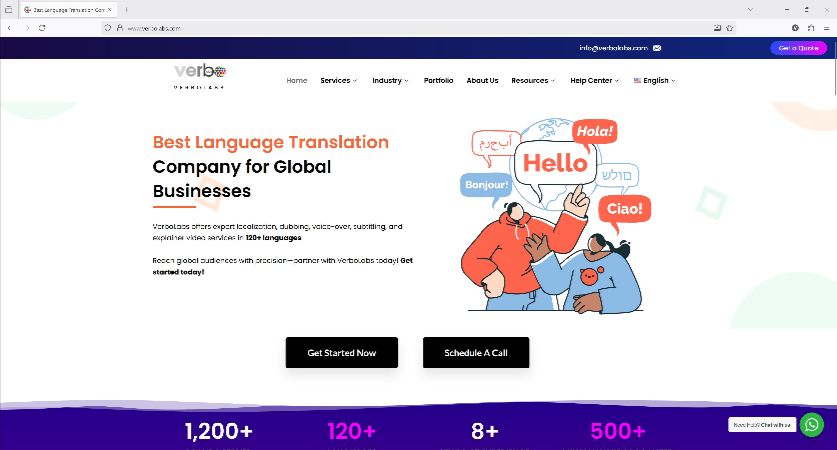
Pros
![]()
-
Supports +120 languages
-
AI subtitles
-
AI translations
Cons
![]()
-
Not all VerboLabs services are AI-enabled
-
VerboLabs’ manual services, such as voiceover, video creation, etc., may require several iterations
8. Dubverse
Dubverse is a complete AI solution that also works as an efficient dubbing application. With over 200 AI voices that range from kids to elderly male and female genders, you can customize emotions, such as funny, sad, angry, and more.
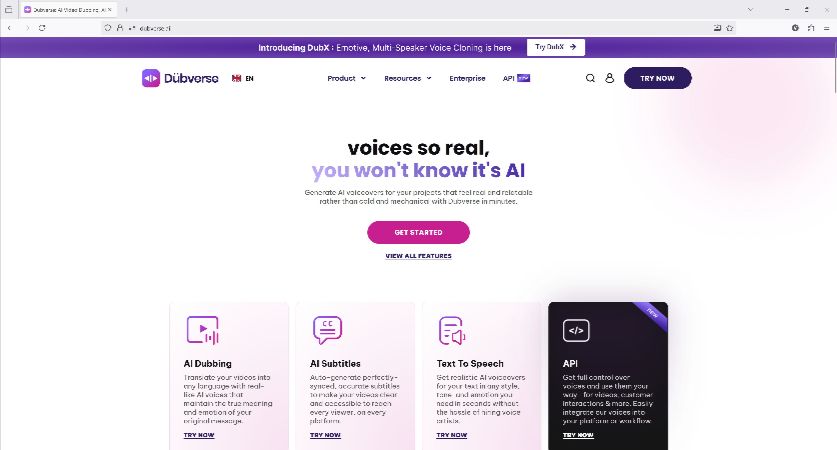
Pros
![]()
-
Subtitle generator
-
Voiceover generator
-
Offers API
Cons
![]()
-
No monthly free plan
-
Comparatively expensive
Part 3. Best Video Dubbing Software for Windows/Mac/Online of All Times
Although the 7 video dubbing apps listed in the previous section do the job well, some are only web-based, while others lack important features. A few offline programs are even resource-intensive and need a high-end PC to run properly.
Luckily, one dubbing application that is considered complete in all aspects is BlipCut Video Translator.
BlipCut Video Translator is an AI-powered video dubbing app that also handles audio files equally well. Furthermore, apart from being an online solution, BlipCut Video Translator is also available for Windows, allowing you to choose the variant that best suits your requirements and convenience.
Key Features
-
Voice cloning
-
Subtitle generator
-
Subtitle translator
-
130+ supported languages
-
Built-in screen recorder
-
Lip syncing
-
Clip creator
-
Voice translator, and more
Using BlipCut Video Translator as a video dubbing app is easy. Follow the steps given below:
Step 1. Upload the Video
Click here. Click Video Translator.

Click Upload Video. Upload the video in the original language.

Step 2. Set Translation Options
Choose the original language. Set the target language. Confirm that Instant Voice Clone is selected. Click Translate.

Step 3. Export and Download
Click Export. Populate the mandatory fields. Choose relevant options per your requirements. Click Export.

Click Download. Save the video.

Part 4. FAQs on Dubbing Applications
Q1. Are video dubbing apps safe?
A1: Yes, if they work offline, without an Internet connection. As for the web-based variants, you must read their privacy policies to understand how they handle your data. To save all this hassle and to work without worrying about security and privacy, consider using BlipCut Video Translator, a dubbing application with a decent reputation.
Q2. Which is the fastest and most accurate video dubbing application?
A2: The fastest and most accurate video dubbing app you can try and use for the next couple of years is BlipCut Video Translator.
Q3. Can video dubbing apps transcribe and translate audio too?
A3: Yes, if they are efficient and powered by AI algorithms. BlipCut Video Translator is one of those accurate and efficient applications.
Conclusion
Many video dubbing apps produce optimum outputs as long as the source files have clear audio. Furthermore, many dubbing apps do all the processing on their servers, which means that they offer a web-based solution. While this approach is good, there could be privacy concerns if the portal is new and the service provider is unreliable. Fortunately, BlipCut Video Translator has a decent reputation in the market when it comes to choosing and using the best AI dubbing application.
Leave a Comment
Create your review for BlipCut articles



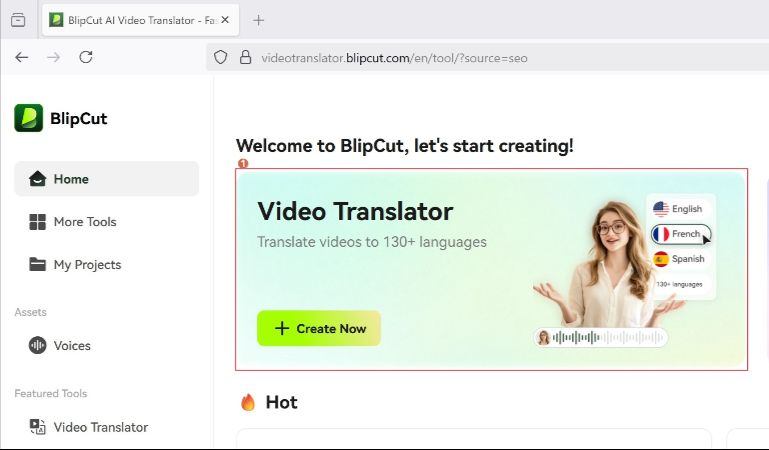


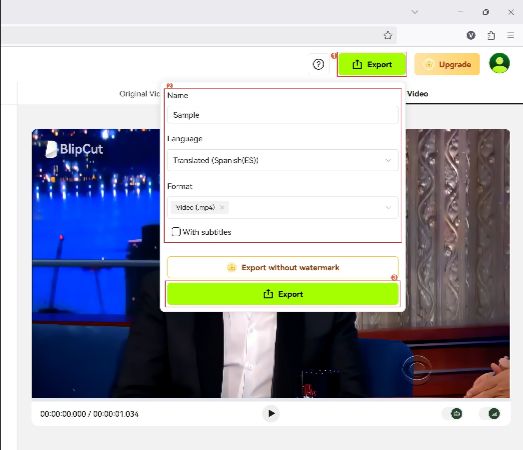
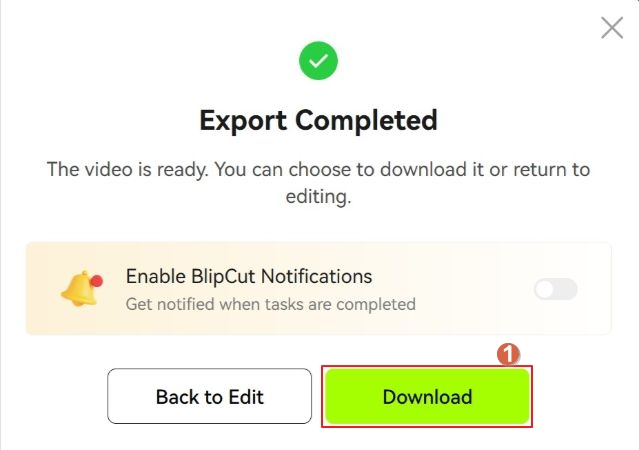




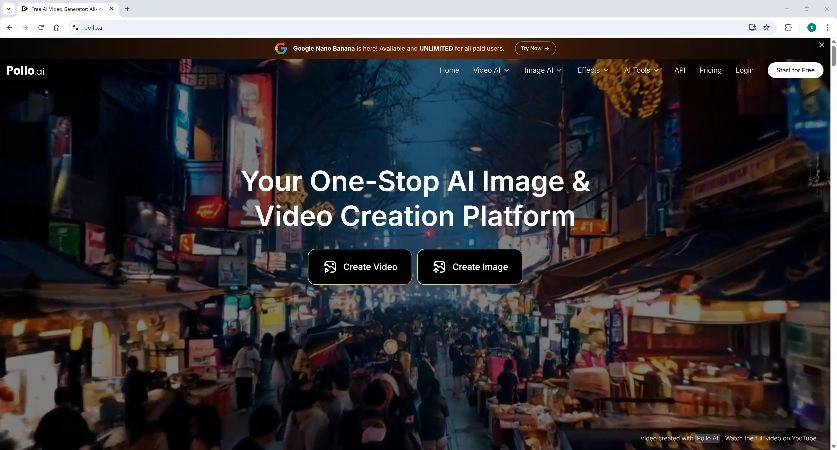
Blake Keeley
Editor-in-Chief at BlipCut with over three years of experience, focused on new trends and AI features to keep content fresh and engaging.
(Click to rate this post)